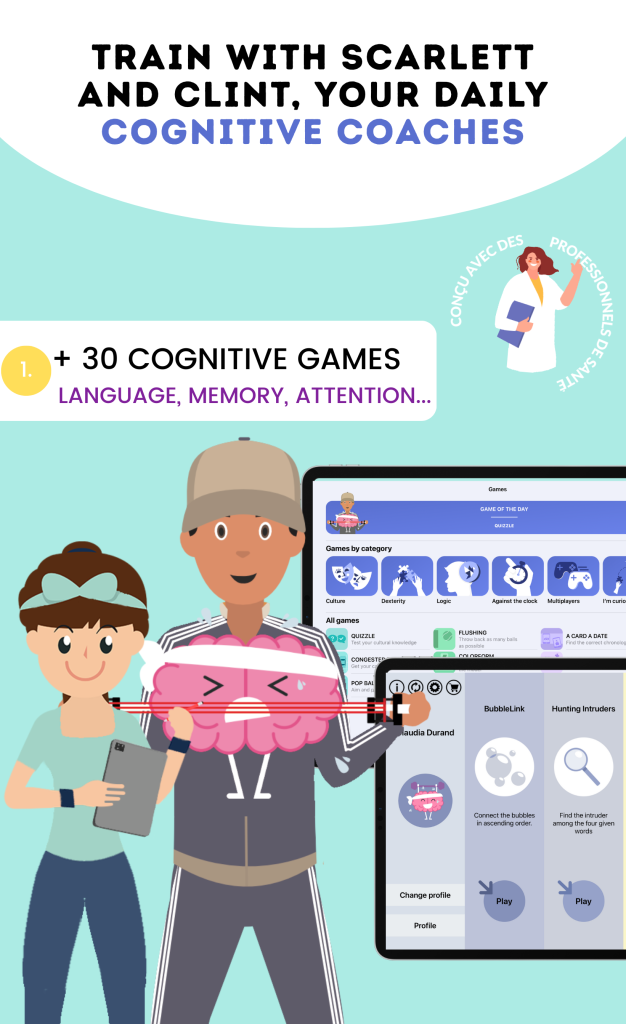When discussing the topic of school difficulties in middle school, it is essential to know how to identify the warning signs that may alert parents and teachers. We can observe that some students begin to show signs of disengagement, such as decreased motivation or a lack of interest in school subjects. For example, a student who previously participated actively in class may become silent and passive, which can be an indicator of underlying difficulties.
Moreover, changes in academic performance can also be revealing. If a student who had good grades starts to fail or achieve results below their capabilities, this deserves our attention. Other signs include organizational problems, frequent forgetfulness of homework or school materials, as well as an increase in stress or anxiety related to school.
These manifestations should prompt us to act quickly to understand the situation.
Summary
- Signs of school difficulties in middle school may include declining grades, a lack of interest in school, behavioral problems in class, etc.
- The consequences of school difficulties on academic success can be decreased motivation, loss of self-confidence, and even school dropout.
- Factors that can cause school difficulties in middle school include learning disorders, family problems, adaptation difficulties, etc.
- When to worry: indicators of persistent difficulties include challenges that last for several months, signs of emotional distress, etc.
- The importance of communication with the educational team is essential to understand and help the struggling student.
The consequences of school difficulties on academic success
School difficulties can have significant repercussions on a student’s academic success. Indeed, when students encounter obstacles in their learning, this can lead to a downward spiral where a lack of self-confidence and frustration accumulate. We often find that these students may develop an aversion to school, which further complicates their educational journey.
The consequences are not limited to academic results. They can also affect the social and emotional life of students. A struggling student may feel isolated from their peers, which can harm their self-esteem and ability to establish healthy relationships.
It is therefore crucial to recognize these impacts and take action to support these young people so they can find their way back to success.
Long-term consequences
School difficulties can also have long-term effects, including:
- School dropout: A student who cannot overcome their difficulties may decide to drop out of school, limiting their future prospects.
- Mental health issues: Anxiety and depression can develop in students who constantly struggle with their studies.
- Impact on professional life: School difficulties can lead to limited career choices, as academic qualifications are often essential in the job market.
Factors that can cause school difficulties in middle school
The causes of school difficulties in middle school are multiple and varied. We can identify internal factors, such as learning disorders like dyslexia or ADHD, which can make learning more complex for some students. These disorders require special attention and appropriate support to allow students to thrive.
Other external factors can also play a role in school difficulties. For example, an unstable family environment or socio-economic problems can impact students’ concentration and motivation. Additionally, stress related to academic expectations or social relationships can also contribute to these difficulties.
As educators and parents, it is essential to take all these elements into account to better understand the challenges our children face.
Internal and external factors
Here is an overview of factors that can influence school difficulties:
- Internal factors:
- Learning disorders (dyslexia, ADHD, etc.)
- Physical health problems
- Lack of motivation or interest in school subjects
- External factors:
- Unstable family environment (divorce, conflicts, etc.)
- Social pressures and high academic expectations
- Socio-economic problems (lack of resources, precariousness, etc.)
When to worry: indicators of persistent difficulties
It is important to know when to worry about a child’s school difficulties. If we notice that the signs of distress persist despite our efforts to help the student, this may be an indicator that more in-depth intervention is necessary. For example, if a student continues to have poor results despite additional support, it is time to explore other options.
Other indicators include an increase in stress or anxiety related to school, as well as social withdrawal. If a student begins to avoid interactions with their peers or shows signs of depression, it is crucial to act quickly. As parents and educators, we must be attentive to these signals and seek to understand the specific needs of each student.
Warning signs to watch for
Here are some warning signs to watch for:
- Frequent mood changes (irritability, sadness)
- Refusal to go to school or participate in school activities
- Decreased social interactions with peers
- Increased physical complaints (headaches, stomach pains)
The importance of communication with the educational team
Communication with the educational team is essential to support struggling students. We must establish an open dialogue with teachers to share our concerns and receive feedback on our child’s behavior and academic performance. This allows us to have a comprehensive view of the situation and identify the best intervention strategies.
Moreover, close collaboration with the educational team can facilitate the implementation of an action plan tailored to the specific needs of the student. By working together, we can create an environment conducive to learning and help the student overcome their difficulties. Regular communication also allows us to track progress and adjust methods if necessary.
Effective communication strategies
For effective communication with the educational team, we can:
- Schedule regular meetings with teachers to discuss the student’s progress.
- Establish a communication notebook to track homework and classroom behavior.
- Participate in parent-teacher meetings to share experiences and advice.
Resources available to help struggling students
There are many resources available to help students with school difficulties. We can turn to professionals such as school psychologists or speech therapists who can assess the specific needs of the student and propose suitable solutions. Additionally, some schools offer tutoring programs or remedial classes to help students catch up.
We also have access to educational applications like CLINT, your brain coach, which helps students work on their cognitive skills such as attention and memory. For younger children, COCO THINKS and COCO MOVES are suitable tools for developing these skills in children aged 5 to 20 years. These digital resources can complement traditional support and offer a playful approach to stimulate learning.
To learn more about these applications, we invite you to visit Dynseo.
Types of available resources
Here are some types of resources that may be useful:
- Professionals: School psychologists, speech therapists, special educators.
- School programs: Tutoring, remediation workshops.
- Educational applications: Digital tools like CLINT, COCO THINKS, and COCO MOVES.
How to react as a parent to your child’s school difficulties
As parents, it is natural to feel worried when our child encounters school difficulties. The first step is to remain calm and approach the situation with empathy. We must listen to our child and provide a safe space for them to express their feelings and concerns.
This can help strengthen our relationship and show them that they are not alone in this ordeal. Next, it is important to act quickly by seeking appropriate solutions. This may include contacting the educational team to discuss the issues faced and explore available support options.
By working together with teachers, we can implement an action plan that meets our child’s specific needs and helps them regain their self-confidence.
Advice for parents
Here are some tips to help your child:
- Encourage them to express their feelings without judgment.
- Suggest activities that boost their self-confidence.
- Get involved in their homework to better understand their difficulties.
The importance of regular follow-up and personalized support
Regular follow-up is crucial to help a student with school difficulties progress. We must ensure that our child receives personalized support that takes into account their specific needs and learning rhythms. This may include regular sessions with a tutor or a specialized professional who can provide the necessary support.
Moreover, it is essential to regularly assess the progress made in order to adjust learning methods if necessary. As parents, we must be involved in this process by encouraging our child and celebrating their successes, no matter how small. This helps to strengthen their motivation and self-esteem.
Monitoring and evaluating progress
To ensure effective follow-up, we can:
- Set up regular meetings with teachers to discuss progress.
- Use assessment tools to measure the student’s skills.
- Encourage the student to reflect on their own progress and difficulties.
Different pedagogical approaches to help struggling students
There are several pedagogical approaches that can be implemented to help students with school difficulties. For example, project-based learning allows students to work on concrete tasks that stimulate their interest and engagement. This method also promotes the development of transversal skills such as teamwork and problem-solving.
Another effective approach is differentiated instruction, which involves adapting teaching methods according to the individual needs of students. This may include using visual, auditory, or kinesthetic supports to cater to different learning styles. By integrating these approaches into our educational practice, we can offer an inclusive learning environment that fosters the success of all students.
Examples of pedagogical approaches
Here are some examples of approaches that can be beneficial:
- Project-based learning: Allows students to work on topics that interest them.
- Differentiated instruction: Adapts lessons according to learning styles.
- Use of technology: Integrates digital tools to make learning more interactive.
The importance of motivation and self-esteem in academic success
Motivation and self-esteem play a fundamental role in students’ academic success. When we support our child in their efforts and value their achievements, even modest ones, we contribute to strengthening their self-confidence. A motivated student is more likely to engage actively in their learning and persevere in the face of challenges.
It is also important to encourage a growth mindset in our child, meaning helping them understand that failure is part of the learning process and that they can always improve with time and effort. By cultivating this positive attitude, we help our child develop resilience in the face of obstacles they may encounter throughout their academic journey.
Strategies to boost motivation
To enhance your child’s motivation, consider the following strategies:
- Set clear and achievable goals.
- Celebrate small victories to boost confidence.
- Encourage exploration of new passions or interests.
The importance of recognizing and valuing progress, even small ones
Finally, it is essential to recognize and value the progress made by our child, even if it seems minimal. Every advance counts and contributes to strengthening their motivation and self-esteem. As parents, we must celebrate these successes enthusiastically and encourage our child to continue on this path.
We can also set realistic and achievable goals for our child so they can measure their progress over time. This will allow them not only to become aware of their abilities but also to learn to set ambitious goals while remaining realistic about their expectations. By cultivating this positive approach, we contribute to creating an environment conducive to our child’s academic and personal flourishing.
Techniques to value progress
Here are some techniques to value progress:
- Keep a success journal where the child can note their advances.
- Organize celebration moments for each achieved goal.
- Encourage discussion about the challenges overcome and the lessons learned.





